The smartwatches that can predict Parkinson's disease
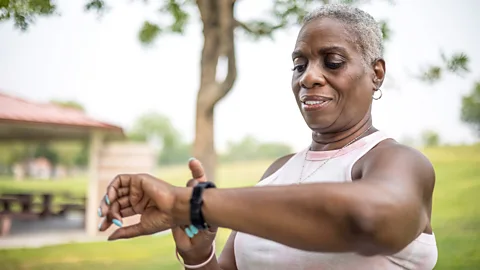 Getty Images
Getty ImagesSmartwatches gather vast amounts of data about our physiology. Now their technology is being harnessed like never before.
As the chief anaesthesiologist at CHUV University Hospital, Patrick Schoettker is all too aware of the complications which can follow a lengthy operation under general anaesthetic.
Rapid blood loss from the surgical site can send the patient into shock, triggering sudden and dangerous dips in blood flow through the body. But patients can also develop severe lung problems after many hours of deep sedation, a complication which accounts for a quarter of all deaths within the first six days of surgery.
Such tragedies sometimes occur due to underlying frailties in the patient's physiology which had gone undetected. But what if hospitals had a quick, low-cost way of screening for them ahead of major procedures?
Schoettker and his colleagues are conducting a trial which involves fitting patients with a smartwatch known as the Masimo W1 several weeks ahead of their pre-operation consultation. The data it has collected is then used to form an assessment of their state of health.
The W1 provides continuous readings of heart rate, respiration rate, blood oxygen, pulse rate and even hydration levels, all to medical-grade accuracy. Schoettker describes the layers of information as being akin to a "digital twin", and believes it could help save lives.
"We plan to use this pre-operatively acquired data to predict possible pre or postoperative complications and act on them in a preventative way," says Schoettker.
This is just one example of how the booming smartwatch market – some analysts have predicted that more than 400 million devices will be sold worldwide by 2027 – is opening up a bold new era of preventative health. Masimo, Apple, Samsung, Withings, FitBit and Polar have all developed watches capable of recording an extraordinary amount of data, allowing measurements such as sleep quality, blood pressure, heart rhythm variation and blood oxygen saturation levels – a marker of how well the heart and lungs are functioning – to be tracked in real-time.
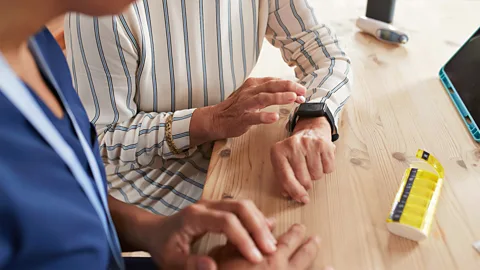 Getty Images
Getty ImagesGosia Wamil, a consultant cardiologist at Mayo Clinic Healthcare in London, says that this information is already helping to alert doctors to potential health problems, enabling them to act sooner.
"More and more patients are willing to use their smartwatches to acquire some data, and then bring the printouts and results to us," says Wamil. "And then we can investigate further and confirm those abnormalities."
So far, some of the biggest applications have been related to heart health. In April this year, one study found that smartwatch-acquired electrocardiogram (ECG) measurements – readings of the heart's electrical activity – could reliably identify extra heart beats in otherwise healthy 50 to 70 year olds. This can be a warning sign of a much more serious condition, atrial fibrillation, where the heart starts beating irregularly or accelerating out of control without warning.
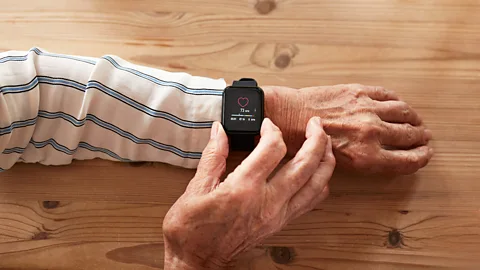 Getty Images
Getty ImagesOther research has found that AI algorithms can use Apple Watch ECG readings to identify people with a low ejection fraction – the amount of blood that your heart pumps each time it beats, which can be a key warning sign of heart failure – with 88% accuracy. Wamil says that this combination of machine learning platforms and smartwatch-derived data is likely to prove revolutionary for patients with all kinds of heart conditions.
"In cardiology clinics, we see patients who complain of palpitations, and we used to have those tapes which we could stick on their chest and record their ECG over 24 hours," says Wamil. "Very frequently, patients may not have symptoms during those 24 hours. But with smartwatches, whenever the patient experiences symptoms, they can press a button on their watch, acquire an ECG and show that to us."
Wamil says this is already leading to preventative treatment, enabling cardiologists to prescribe blood thinner tablets to patients with signs of an irregular heartbeat, to help prevent strokes. She is also interested in whether this data can be used to prevent some of the cardiovascular complications experienced by many type 2 diabetes patients.
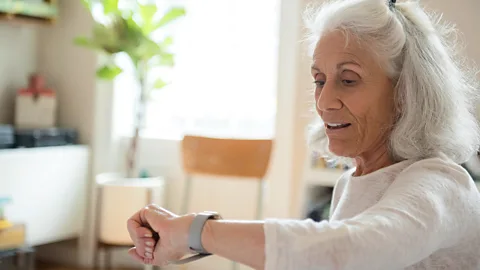 Getty Images
Getty Images"The reason why people with diabetes have shorter lives is because they are much more at risk of developing heart problems," says Wamil. "We hope that in the future, this data could be used to detect early signs to alert the patient and doctor about their future risk of heart attacks and strokes."
Predicting neurological problems
But many of the applications of smartwatches could extend far beyond the heart. In July 2023, researchers at Cardiff University published a study using data from more than 100,000 people, who were given a smartwatch to wear for a week. The results showed that it was possible to identify individuals with signs of Parkinson's disease up to seven years before their clinical diagnosis. This was done by detecting subtle abnormalities in their walking patterns, as measured by the watch's motion sensors.
Cynthia Sandor, who led the study, believes it could be possible to pinpoint these signs even sooner through combining motion data with other smartwatch measurements such as sleep quality, which is known to be disturbed in people who develop the disease.
"In Parkinson's, diagnosis is preceded by a long phase where signs such as subtle motor changes become apparent," says Sandor. "We found that the most predictive feature was a slowing of movement during light physical activity, too subtle to be noticed by individuals themselves."
Sandor believes this information could soon be used to recruit individuals to clinical trials. One of the theories for why effective treatments for Parkinson's have proven so elusive is because patients are diagnosed at a stage where significant brain damage has already occurred, and it may be easier to slow or even reverse the disease at an earlier stage. "We hope that early screening tools based on smartwatch data can identify people early, potentially enabling neuroprotective treatment trials to be successful," she says.
It is also hoped that smartwatches could one day soon help people living with chronic conditions such as epilepsy, through providing them with early warning signs that a seizure is about to occur. Falls and serious accidents resulting from seizures are known risk factors for those living with epilepsy.
"The uncertainty of when seizures might occur is one of the most difficult aspects of living with epilepsy," says Aileen McGonigal of the Queensland Brain Institute. "Seizure forecasting is however still at an early stage."
McGonigal is interested in whether a special prototype version of the Empatica smartwatch designed for research can aid with seizure prediction. In an ongoing research project, she is applying AI algorithms to a combination of data streams. These include heart rate variability, skin temperature, body movement patterns and changes in the electrical conductance of the skin due to sweating, which reflects alterations in the body's autonomic nervous system. Each of these parameters can be measured by the watch.
"We aim to analyse patterns in the hours leading up to seizures," says McGonigal. "Ideally epilepsy researchers and clinicians would like for patients to be able to forecast when seizures are more likely to occur, which might allow tailoring of treatment, including variable doses of medication and adaption of daily activities to reduce risk of seizure-related falls and injury," she says.
But while there is considerable excitement about what the combination of powerful AI algorithms and increasingly accurate wearable measurements might be able to achieve, some doctors are also cautious about the potential for false positives. There are concerns that the overuse of smartwatches could lead to an increase in patient anxiety, as well as testing the resources of already overstretched health systems.
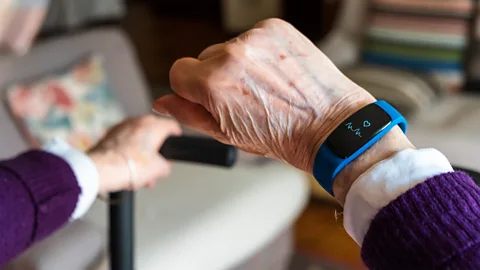 Getty Images
Getty Images"Technology is helping medicine in many different ways," says Jeremy Smelt, a consultant thoracic surgeon at St George's Hospital NHS Foundation Trust. "One of them is the early detection of problems, but it can also save lives. As with all technologies, smartwatches have to be tried and tested. False positives will cause anxiety and may end up in people going to the GP when they don't need to. But they are also very interesting for those with health conditions and could save health services money through picking things up early," he says.
But as smartwatches become even more sophisticated, and manufacturers figure out more and more ways to obtain quantifiable data about the human body, the list of potential preventative health applications is only going to increase.
Masimo CEO Joe Kiani is already focusing on the next frontier for his company's smartwatches: being able to predict an asthma attack.
"We have a measurement for respiratory effort," says Kiani. "We can tell when you're struggling to breathe because respiration rate increases, pulse rate increases… all trying to make up for the lack of oxygen that you're getting," he says. "What's crazy is that for the past 50 to 60 years, all we've had at home is a thermometer to help you decide what to do [when you're sick]. Now we're going to have this rich set of information which can help people to stay out of the emergency department and still get the right care."
--
If you liked this story, sign up for The Essential List newsletter – a handpicked selection of features, videos and can't-miss news, delivered to your inbox twice a week.
For more science, technology, environment and health stories from the BBC, follow us on Facebook and X.
